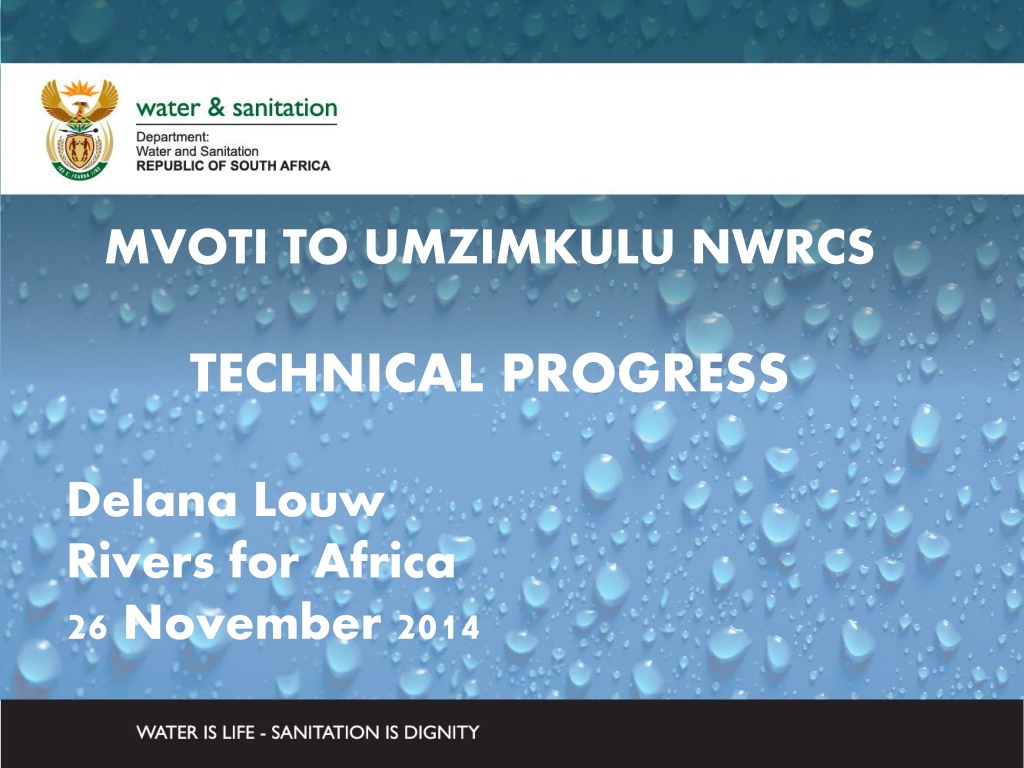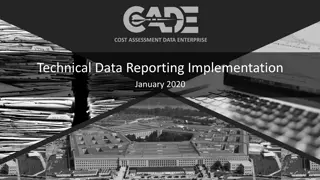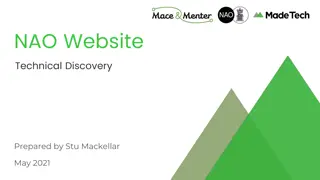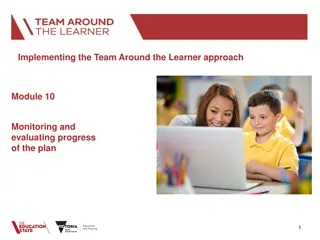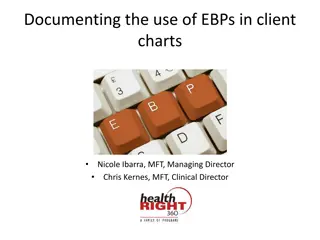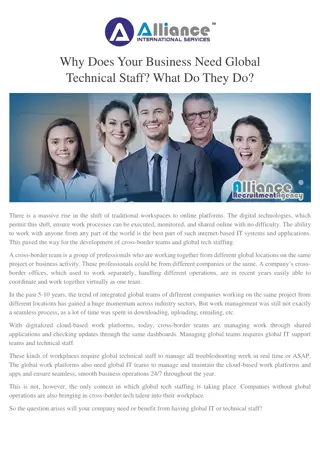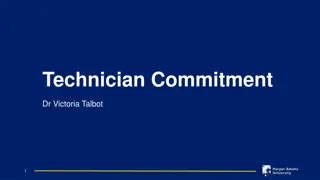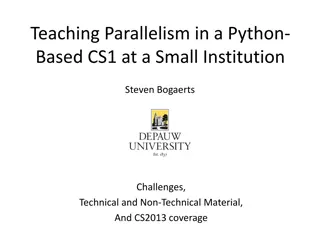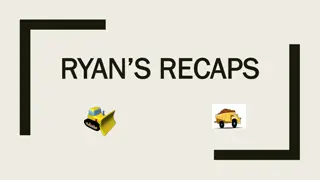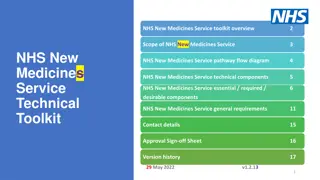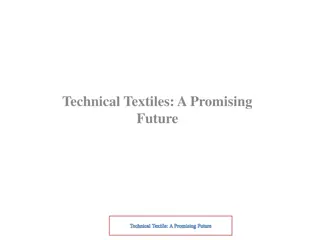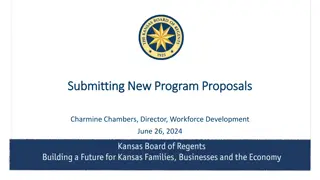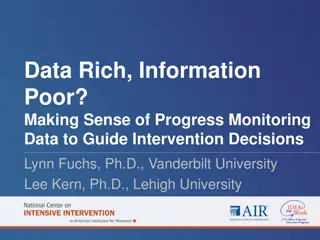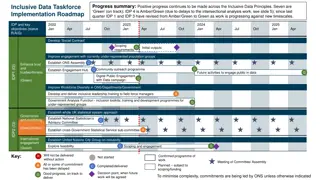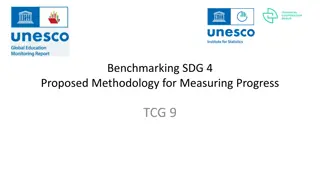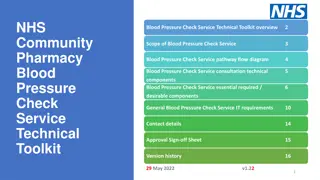TECHNICAL PROGRESS
The corporate identity project "MVOTI.TO.UMZIMKULU.NWRCS" was presented by Johan Maree, Deputy Director of Media Production, showcasing technical progress and project plan. Tasks included status quo assessment, IUA delineation, quantifying EWRs, evaluating scenarios in IWRM, determining RQOs, and stakeholder engagement.
Download Presentation

Please find below an Image/Link to download the presentation.
The content on the website is provided AS IS for your information and personal use only. It may not be sold, licensed, or shared on other websites without obtaining consent from the author. Download presentation by click this link. If you encounter any issues during the download, it is possible that the publisher has removed the file from their server.
E N D
Presentation Transcript
MVOTI TO UMZIMKULU NWRCS DWA CORPORATE IDENTITY Presented by: Johan Maree Deputy Director: Media Production TECHNICAL PROGRESS 12 December 2012 Delana Louw Rivers for Africa 26 November 2014
PROJECT PLAN & STUDY TASKS TECHNICAL STEPS Complete In process 1. Status quo, IUA delineation OTHER STEPS 3. Quantify EWRs 8. Capacity Building 2b Stakeholder process 2a Visioning 8. Gazetting 4. ID & evaluate scenarios in IWRM 5. Evaluate scenarios with stakeholders and determine MC 6. RQO
STEP 1: STATUS QUO & IUA DELINEATION Task completed. Purpose of task is to select homogenous areas that can be managed as an entity (IUA), to determine the status quo of the IUAs, and 1. Status quo, IUA delineation 3. Quantify EWRs 4. ID & evaluate scenarios in IWRM to determine hotspots to prioritise the RUs for RQOs amongst others. The output in essence is a sustainable base configuration that equates to the present state. Changes in this status are measured when evaluating operational scenarios within IWRM (Step 4). 29 IUAs identified, each with nodes.
STEP 3: QUANTIFY EWRS Purpose of task is to determine EWRs at each biophysical node. Output is EWRs as flow duration tables for each node All river & estuary surveys have been undertaken Hydrological modelling for all river nodes completed 1. Status quo, IUA delineation 3. Quantify EWRs 4. ID & evaluate scenarios in IWRM During previous meetings: Detailed EWRs presented at 12 EWR sites. EWRs at 158 desktop biophysical nodes presented: Reports have been distributed for comments. Estuary EcoClassification has been undertaken and recommended EWR been determined
STEP 4 & 5: ID & EVALUATE SCs WITHIN IWRM 1. Status quo, IUA delineation Determined preliminary operational scenarios and test with stakeholders. Determined consequences of scenarios for U1 and U4: River, estuary, economics, ecosystem services, yield. Ranking scenarios have taken place 3. Quantify EWRs 4. ID & evaluate scenarios in IWRM 5. Evaluate scenarios with stakeholders and determine MC U1 & U4: Make study team recommendations, U1 & U4: Take consequences and draft MC to stakeholders (November 2014) Rest of study area to be addressed at next PSC meeting
STEP 6: RQOs Purpose of task is to determine RQOs for each moderate and priority RUs. Level of detail & indicator components determined and differ between moderate and high priority RUs for U1 and U4 (rivers). 6. RQOs Similar work for rest of study area this afternoon (rivers) Estuaries, wetlands, groundwater to follow. RQOs to be determined post this meeting and to be provided at next stakeholder meeting.
STEP 6: RQOs RQOs capture the Management Class of the Classification System and the ecological needs determined in the Reserve into measurable management goals that give direction to resource managers as to how the resource needs to be managed. RQOs for a water resource are a numerical or descriptive statement of the conditions which should be met in the receiving water resource, in terms of resource quality, in order to ensure that the water resource is protected. Informs Defines Water Resource Class Operational Scenario/s RQOs
RECAP OF PROCESS TO DETERMINE MC Determine Status Quo Identify operational scenarios User water quality consequences EcoSystem Services consequences Economic consequences Determine EWR Ecological consequences CHANGE FROM STATUS QUO? (PREDICT CONSEQUENCES) Draft Select future operational scenario Management Classes for each Scenario MANAGEMENT CLASS U1 & U4 to be presented
RECAP OF PROCESS TO DETERMINE MC Test scenarios and associated MC with stakeholders Select scenario and draft MC Consider trade- offs Recommended MC Recommended RQOs for MC DWA decision Gazetting proposed classes and RQO Gazetting final classes and RQO MC (& CATCHMENT CONFIGURATION) & RQOs GAZETTED
